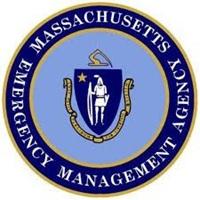
A winter storm in New England can range from a moderate snowfall over a few hours to a Nor'easter, bringing blizzard conditions with blinding wind-driven snow that lasts several days. People can become stranded in their automobiles or trapped at home, without utilities or other services. The aftermath of a winter storm can have an impact on a community or the entire region for days, weeks or even months. Storm effects, in New England, include large snow accumulation, extremely cold temperatures, heavy, wet snow or icing on trees and powerlines, roof collapses, coastal flooding and beach erosion. Winter storms are also deceptive killers because most deaths are indirectly related to the actual storm. The major causes are automobile or other transportation accidents, exhaustion and heart attacks caused by overexertion, 'freezing to death' and asphyxiation from improper heating sources. House fires occur more frequently in the winter due to lack of proper safety precautions when using alternate heating sources, like unattended fires and space heaters. As with most potential disasters: preparedness, monitoring the Media and common sense can minimize the danger to you and your family.
After a Winter Storm
Do not become a ‘spectator’. Continue to stay off streets and roads to allow plowing and clean-up operations to proceed smoothly.
Be careful when shoveling snow. Over-exertion can bring on a heart attack – a major cause of death in the winter.
Clear exhaust vents from Direct Vent Gas Furnace Systems to avoid Carbon Monoxide (CO) poisoning. Also, never run an automobile until the exhaust pipe has been cleared of snow.
Make sure emergency generators or secondary heating systems are well ventilated.
Help dig out fire hydrants and storm drains in your neighborhood.
Protect yourself by dressing for the season, wearing several layers of loose fitting, lightweight, warm clothing, rather than one layer of heavy clothing.
The outer garments should be tightly woven and water repellent. Mittens are better than gloves. Wear a hat, as most body heat is lost through the top of the head. Cover your mouth with a scarf to protect your lungs.
Avoid parking too close to corners, allowing Public Safety vehicles and plows to maneuver safely.
Be aware of children playing in the streets, particularly climbing on or running out from behind large snowdrifts. Parents should remind their children to be aware of plowing operations and traffic.
Safely reduce the amount of snow on roofs. The stress caused by heavy wet snow can challenge the integrity of the structure. For more, see Roof
Collapse & Storm Drain Safety Information webpage.
In order to protect against possible voltage irregularities that can occur when power is restored, you should unplug all sensitive electronic equipment, including TVs, stereo, VCR, microwave oven, computer, cordless telephone, answering machine and garage door opener. Be sure to leave one light on, so you will know when power is restored.
If you lose your heat, seal off unused rooms by stuffing towels in the cracks under the doors. At night, cover windows with extra blankets or sheets. Food provides the body with energy for producing its own heat.
Be extra cautious if you go outside to inspect for damage after a storm. Downed or hanging electrical wires can be hidden by snowdrifts, trees or debris, and could be live. Never attempt to touch or move downed lines. Keep children and pets away from them.
Do not touch anything that power lines are touching, such as tree branches or fences. Call your utility company to report any outage-related problem.
Call 2-1-1 for non-emergency storm-related questions.
Be a good neighbor. Check with elderly or relatives and neighbors who may need additional assistance to ensure their safety.















